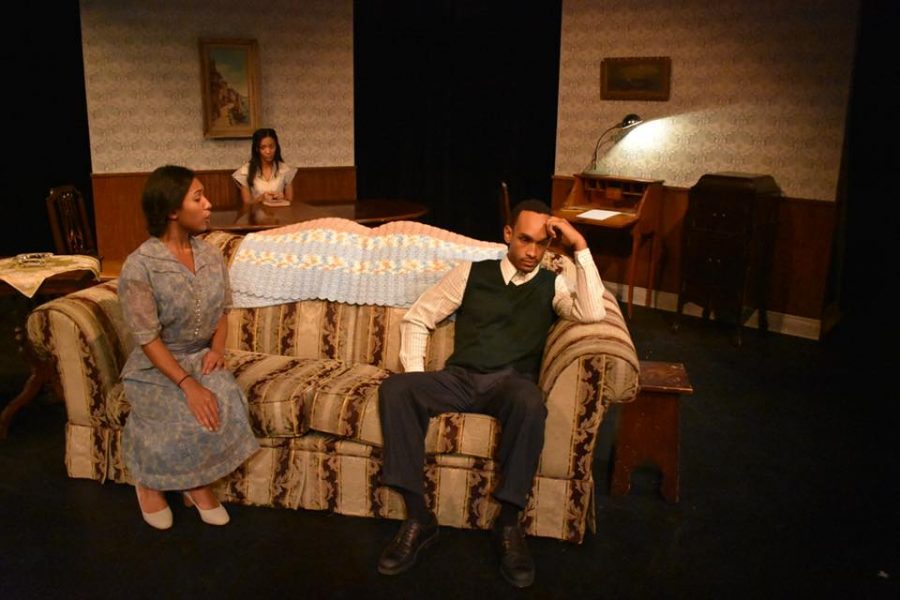From memory to the stage: “The Glass Menagerie” Recreation Review
Williams’ own personal background served as inspiration for the main character’s dissatisfaction with his life as he himself was raised by an overbearing mother and was forced to work in a factory to support his family while focusing on his writing. Briggs’ interpretation of Tom is brash and ambitious with a strong voice that commands attention at whichever point he is on stage, and often butts heads with his mother whether or not his nightly trips to the “movies” are really just movies.
Laguna, who plays Amanda, does well in stealing the spotlight with her amusing air of superiority as a result of her southern upbringing. This clashes with Laura, making her first appearance as an extremely shy young woman with a limp as she is berated by Amanda for not interacting with the outside world on account of her “indigestion” — she basically gets very ill when having to deal with social situations. Johnson does an amazing job demonstrating Laura’s insecurities and disability in such a natural way, that it is very easy to sympathize with her and her plight. Amanda often reminisces about her grand past with constant references to her life as a girl, in which through Laura she hopes to live her youth again. The stage becomes her home and she makes sure that is known with every exaggerated gesture.
When the play reaches its end with a monologue by Wingfield, he tells the audience of his current life and the decisions he has made that have altered his life. This creates a haunting atmosphere that seems to particularly focus on Tom as he moves around the stage as if being followed by a heavy cloud. The lighting casts him in a bluish glow that brings the meaning of the blues to life. Tom and everyone involved in the play had caught their own version of the blues. All except for cheerful Jim O’Connor (Jimmy Santos), a character introduced halfway through. He is lighthearted and confident in a way that contrasts with Tom’s broodiness and especially Laura’s shyness, whom O’Connor tries to help. He lights up the room in nearly every scene he is in on stage and suddenly it becomes very easy to be convinced by his charismatic advice. The direction of the show flows in a way that is smooth, and the audience can feel each character’s desires and motives behind their actions.
All of the actors played their parts wonderfully, acting in a way where the characters came to life and were simply living out their lives in front of an audience that just happened to be there.

Aida Solomon is a writer here at Excalibur. On Takoma Park campus on Fridays after 12:30.










